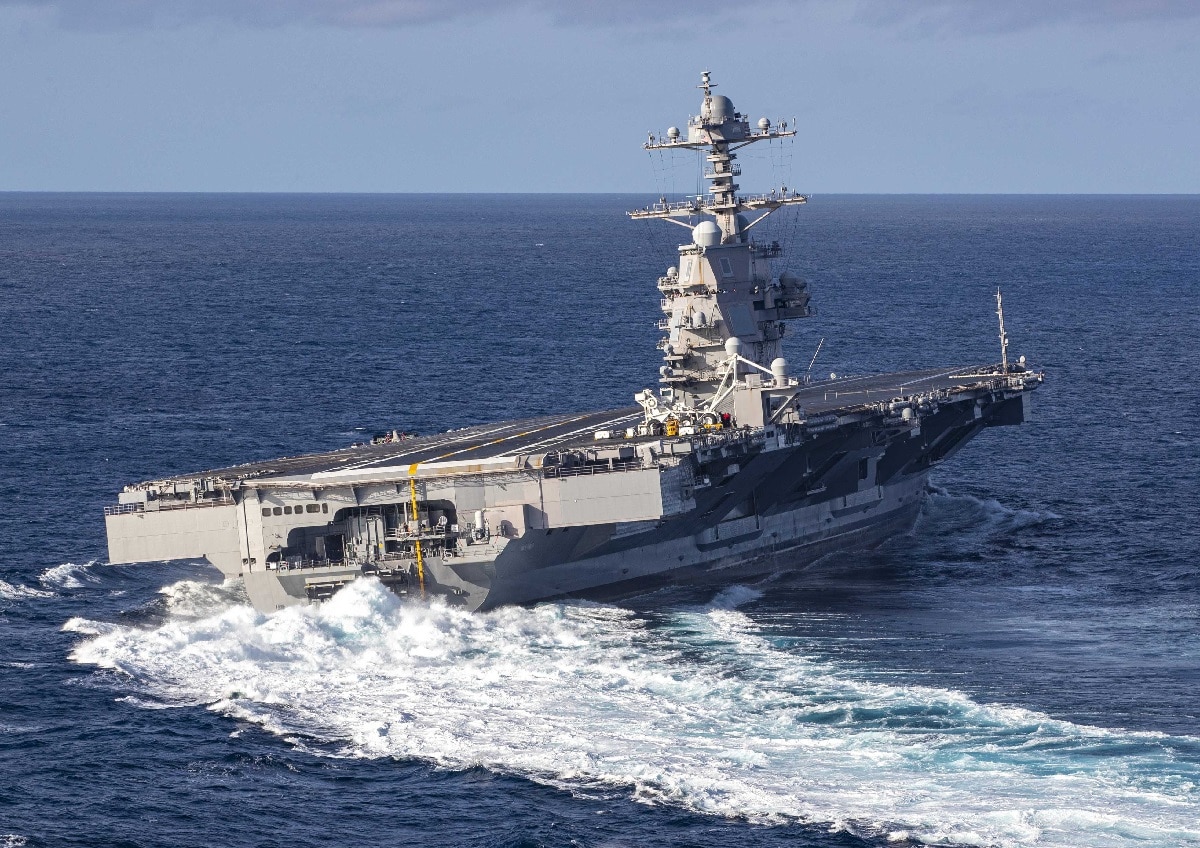United States Central Command (CENTCOM) announced on Sunday that it will deploy the USS Gerald R. Ford Carrier Strike Group to the Eastern Mediterranean to support Israel. The deployment follows a weekend attack by Hamas that left more than 1,000 dead on both sides. Americans are thought to be among those killed and missing.
The Israeli government formally declared war on Hamas on Sunday and gave the green light for “significant military steps” to retaliate against Hamas.
A Carrier Strike Group On the Way
The strike group is headed by the U.S. Navy aircraft carrier USS Gerald R. Ford (CVN-78), the newest and largest nuclear-powered supercarrier in the U.S. fleet. It also includes the Ticonderoga-class guided-missile cruiser USS Normandy (CG 60), as well as the Arleigh-Burke-class guided missile destroyers USS Thomas Hudner (DDG 116), USS Ramage (DDG 61), USS Carney (DDG 64), and USS Roosevelt (DDG 80).
CENTCOM further stated that steps have been taken to augment U.S. Air Force F-15, F-16, and A-10 fighter aircraft squadrons in the region. The U.S. maintains ready forces globally to further reinforce this posture if required.
“US CENTCOM stands firmly with our Israeli and regional partners to address the risks of any party seeking to expand the conflict,” said Gen. Michael “Erik” Kurilla, Commander, U.S. Central Command.
The USS Gerald R. Ford has been deployed to the Mediterranean since this spring. In the past five months, the carrier strike group has taken part in numerous bilateral exercises and training events with allies and partners to enhance and demonstrate the U.S. commitment to security in the region.
The U.S. Show of Force
Rather than directly supporting Israel in its war against Hamas, which is a recognized terrorist organization, the large deployment is meant to reflect Washington’s desire to deter any regional expansion of the conflict.
“The U.S. maintains ready forces globally to further reinforce this deterrence posture if required,” U.S. Secretary of Defense Lloyd Austin said in a statement, adding that the Biden administration “will be rapidly providing the Israel Defense Forces with additional equipment and resources, including munitions. The first security assistance will begin moving today and arriving in the coming days.”
On Saturday the most serious fighting in a generation broke out between Israel and Hamas, as the latter launched a surprise attack of unprecedented scope and destructiveness against Israeli communities near the Gaza Strip.
The operation included direct attacks on Israel’s air defense network, the destruction of barriers along the border that allowed the infiltration of armed groups of militants for the purpose of murder and kidnapping, and a substantial rocket assault on the southern half of the country.
It is already seen as one of the most devastating attacks Israel has suffered in its 75-year history — more devastating in some ways than the Yom Kippur War, which preceded it by almost exactly 50 years.
Author Experience and Expertise
A Senior Editor for 19FortyFive, Peter Suciu is a Michigan-based writer. He has contributed to more than four dozen magazines, newspapers, and websites with over 3,200 published pieces over a twenty-year career in journalism. He regularly writes about military hardware, firearms history, cybersecurity, politics, and international affairs. Peter is also a Contributing Writer for Forbes and Clearance Jobs. You can follow him on Twitter: @PeterSuciu.

